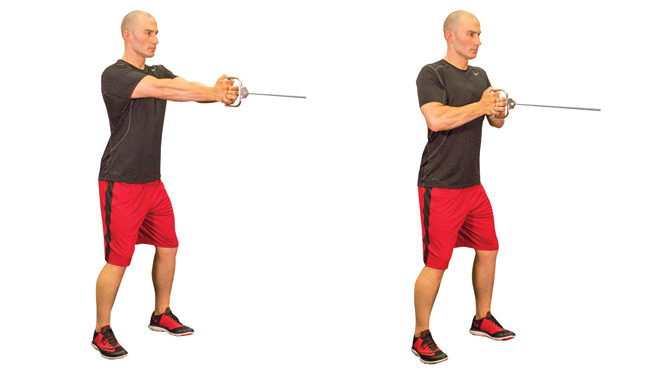What is True core stability ?

Your Journey to ACL recovery
September 7, 2016
Shoulder joint pain and trigger point areas in shoulder region
November 21, 2016 In a world that idealizes 6-packs abs as being the ideology of strength, nothing can be further away from the real truth. Even though the Rectus Abdominus (AKA the abs or RA) has important functions in terms of spinal flexion and stabilizing the pelvis, the RA has minimal function in providing true core stability when performing functional movements and overall stability at the level of the spine. As a result, you may do as many sit ups and crunches as you want with little to no change in true core strength.
In a world that idealizes 6-packs abs as being the ideology of strength, nothing can be further away from the real truth. Even though the Rectus Abdominus (AKA the abs or RA) has important functions in terms of spinal flexion and stabilizing the pelvis, the RA has minimal function in providing true core stability when performing functional movements and overall stability at the level of the spine. As a result, you may do as many sit ups and crunches as you want with little to no change in true core strength.
The true core is made up of 4 muscles groups that work synergistically to squeeze your visceral organs and stabilize the spine. The four muscle groups are:
- The Transverse Abdominus (TVA)
- Multifidus
- Pelvic Floor
- Diaphragm
The TVA is an extremely thin muscle that lies just deep to the Internal Obliques. It originates from the lateral third of the inguinal ligament, inner lip of the iliac crest, off the cartilage of the lower 6 ribs and off the thoracolumbar fascia (Fascia on the back) inserting anteriorly into the fascia just lateral to the RA, interdigitating into the Internal Obliques and onto the pubis. As the TVA surrounds the entire trunk, it acts like a muscular corset squeezing all the internal organs and spine together milliseconds before force needs to be transmitted. The Multifidus on the other hand, which is a small group of muscles that compress the vertebral segments in the spine, make up the back of the corset. The Multifidus span from the lumbar region (Lower back) all the way up to the thoracic region (Mid too upper back) creating a bridge between vertebral segments that may compress them when needed. Together, they stabilize the spine and accommodate the forces going across it. The Pelvic Floor, which makes up the bottom portion of the of the true core, is primarily responsible for controlling defecation and bracing all organs on the lower end of the body. The top portion of the true core is the diaphragm which happens to be the most problematic muscle of them all when dealing with core stability. The diaphragm is a dome shaped muscle that partitions the thorax from the abdomen and is the primary muscle responsible for breathing in humans. When correctly functioning, the diaphragm depresses and squeezes the visceral organs creating an outward pressure against the stomach and back. This action of pushing outwards will create an increase in intrathoracic and intra-abdominal pressure which, intern, is what can be defined as true core stability. As breathing is required at all times to stay alive, people tend to facilitate true core stability by holding their breath, especially when they exercise. This technique, also called the Valsalva Manoeuver, is a strategy to make up core stability by attempting to exhale while maintaining the mouth and nose (Glottis) closed. This becomes especially problematic when the body begins to rely on this strategy to overcome any stress that is placed on itself to make up for core stability that isn’t present. As a result, many people obtain dysfunctions such as lower back pain and neck pain as smaller accessory muscles start compensating for this lack of stability.
To increase core stability, one must not perform crunches, sit ups or any kind of trunk flexion based exercises as this only strengthens your RA, hip flexors and destroys one’s posture. Bracing motions such as planks, side planks, dead bugs, Paloff presses and crawling patterns, when correctly performed, are much more beneficial in allowing one to brace through the core, focus on breathing properly and re-establishing true core strength.





